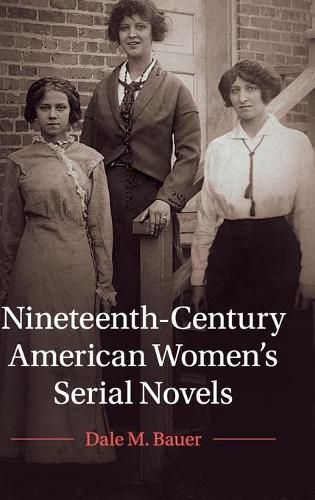Readings Newsletter
Become a Readings Member to make your shopping experience even easier.
Sign in or sign up for free!
You’re not far away from qualifying for FREE standard shipping within Australia
You’ve qualified for FREE standard shipping within Australia
The cart is loading…






Nineteenth-Century American Women’s Serial Novels explores the prolific careers of four exemplary novelists - E. D. E. N. Southworth, Ann Stephens, Mary Jane Holmes, and Laura Jean Libbey. These commercially successful writers helped to shape the popular tradition of serial magazine fiction by drawing on readers’ tastes along with their cultural concerns. Their astonishing productivity led magazine editors and publishers to return to them repeatedly for more serials to be
turned into even more novels, even as they reprinted these fictions under new titles. Dale M. Bauer analyzes how serials deployed the repetition of plots and the traumas representing the sources of women’s anxieties and pain. Arguing that these novels provided temporary resolutions to the social, economic, and psychological tensions that readers faced, Bauer explains how this otherwise forgotten archive of fiction now offers an extraordinarily expanded range of women’s literary effort from the nineteenth to the twentieth century.
$9.00 standard shipping within Australia
FREE standard shipping within Australia for orders over $100.00
Express & International shipping calculated at checkout
Nineteenth-Century American Women’s Serial Novels explores the prolific careers of four exemplary novelists - E. D. E. N. Southworth, Ann Stephens, Mary Jane Holmes, and Laura Jean Libbey. These commercially successful writers helped to shape the popular tradition of serial magazine fiction by drawing on readers’ tastes along with their cultural concerns. Their astonishing productivity led magazine editors and publishers to return to them repeatedly for more serials to be
turned into even more novels, even as they reprinted these fictions under new titles. Dale M. Bauer analyzes how serials deployed the repetition of plots and the traumas representing the sources of women’s anxieties and pain. Arguing that these novels provided temporary resolutions to the social, economic, and psychological tensions that readers faced, Bauer explains how this otherwise forgotten archive of fiction now offers an extraordinarily expanded range of women’s literary effort from the nineteenth to the twentieth century.